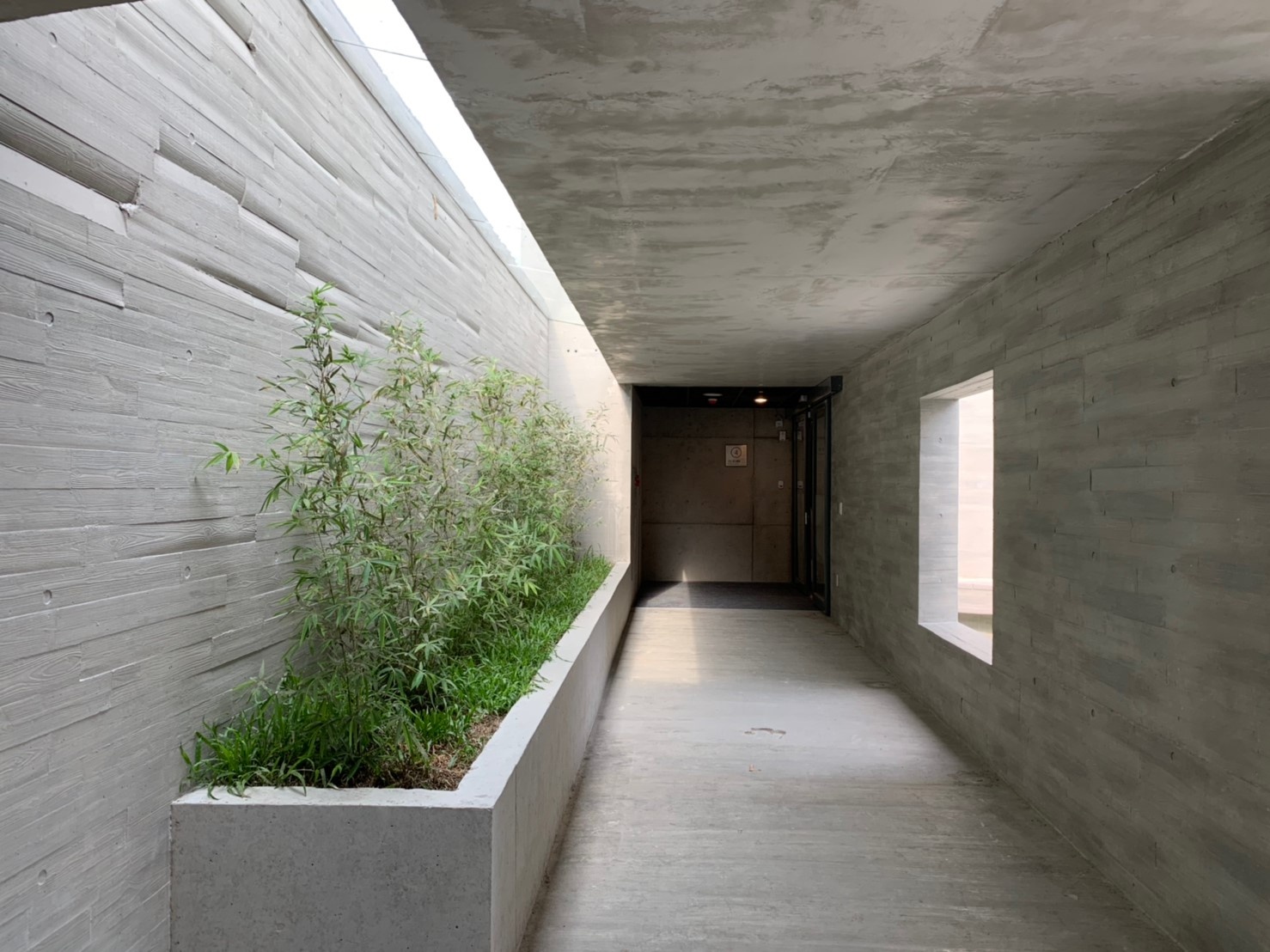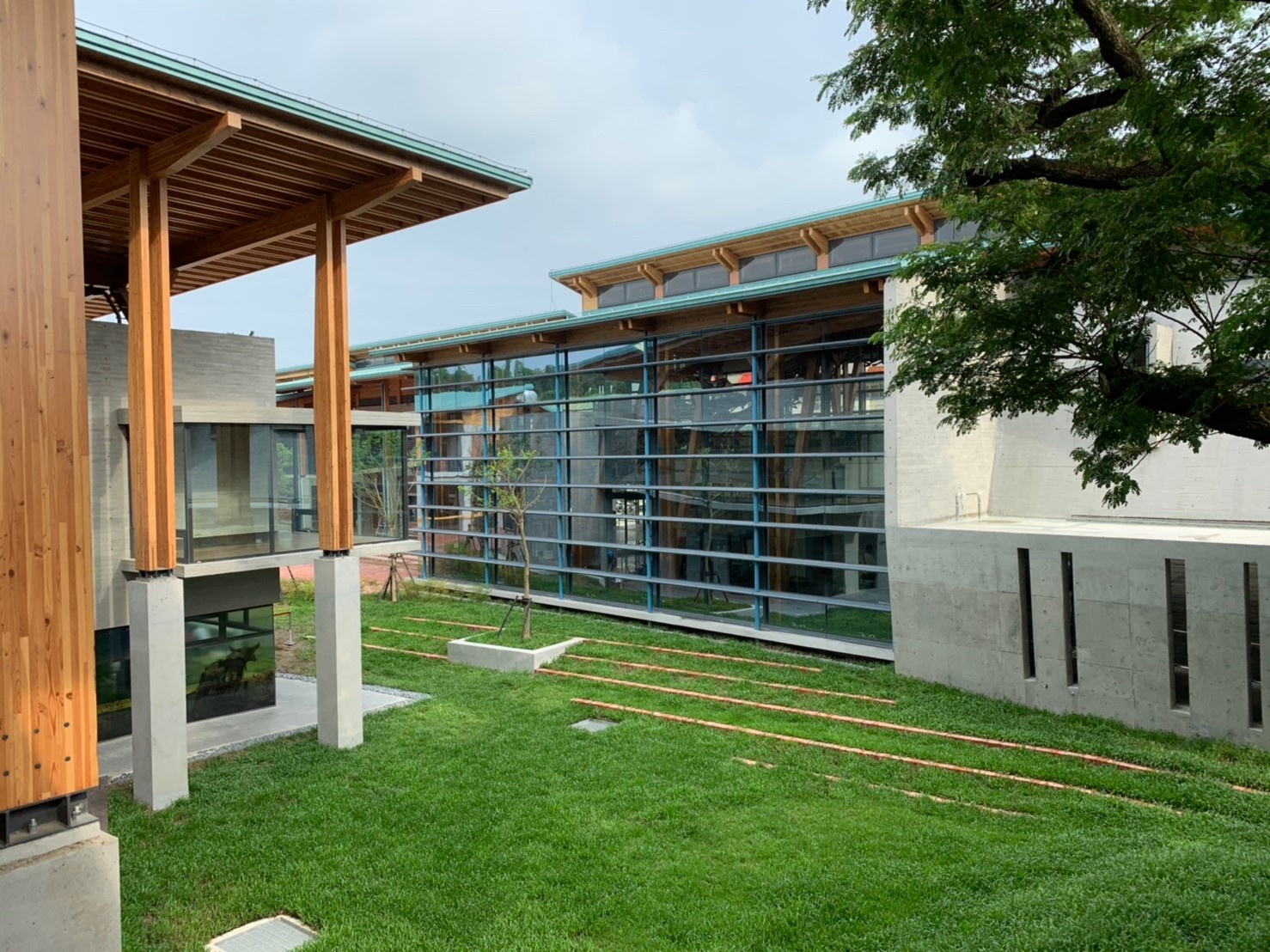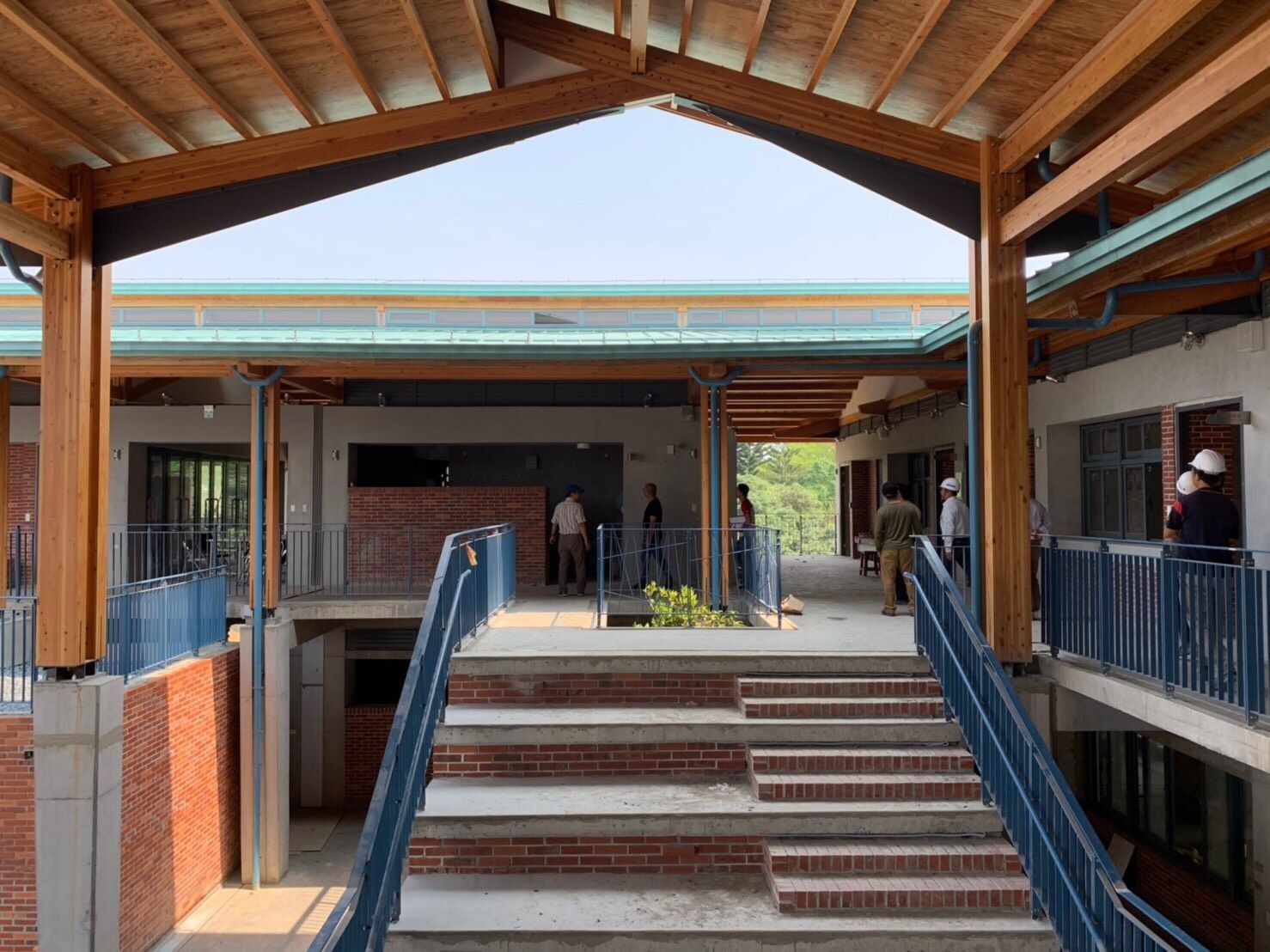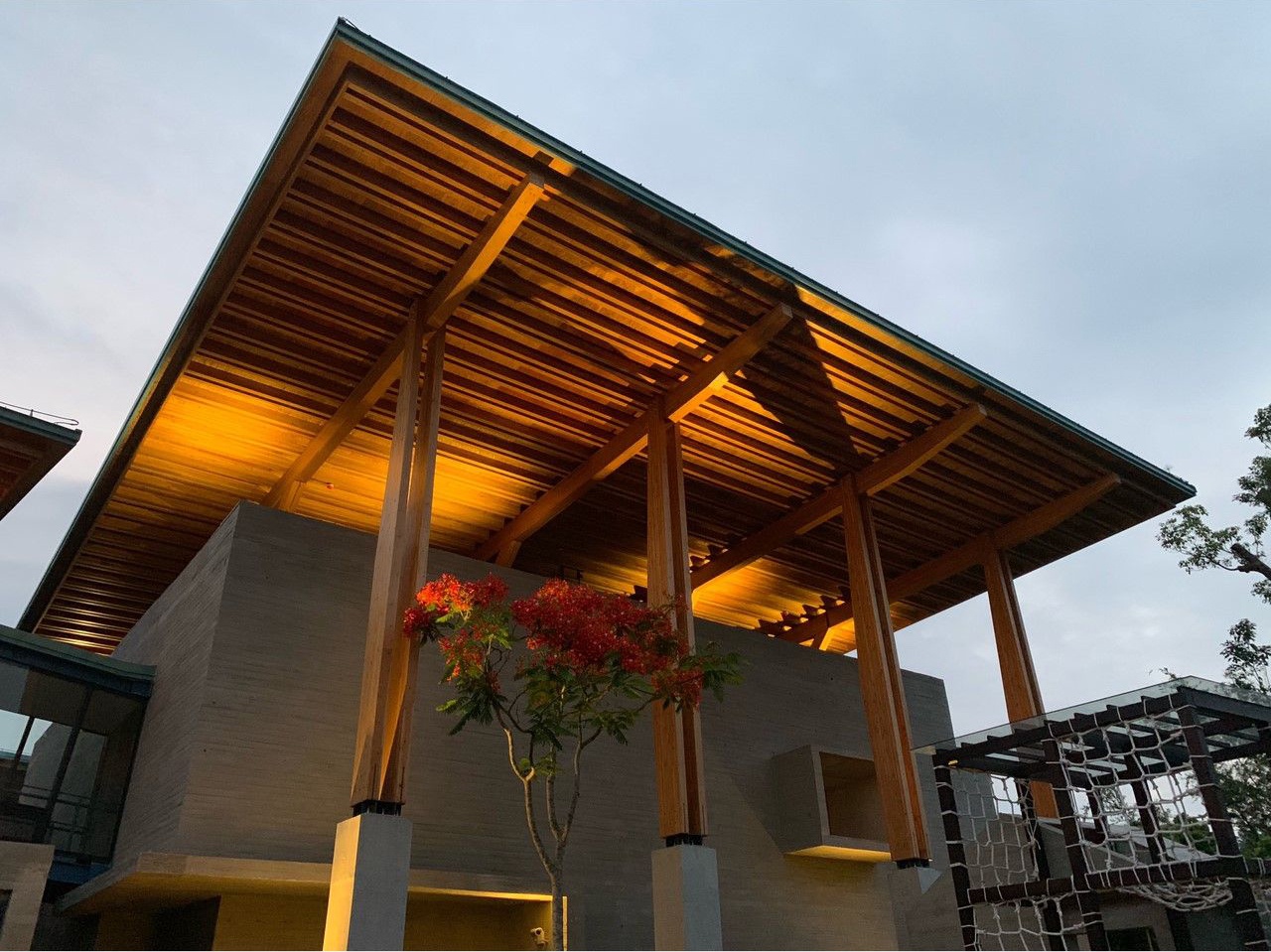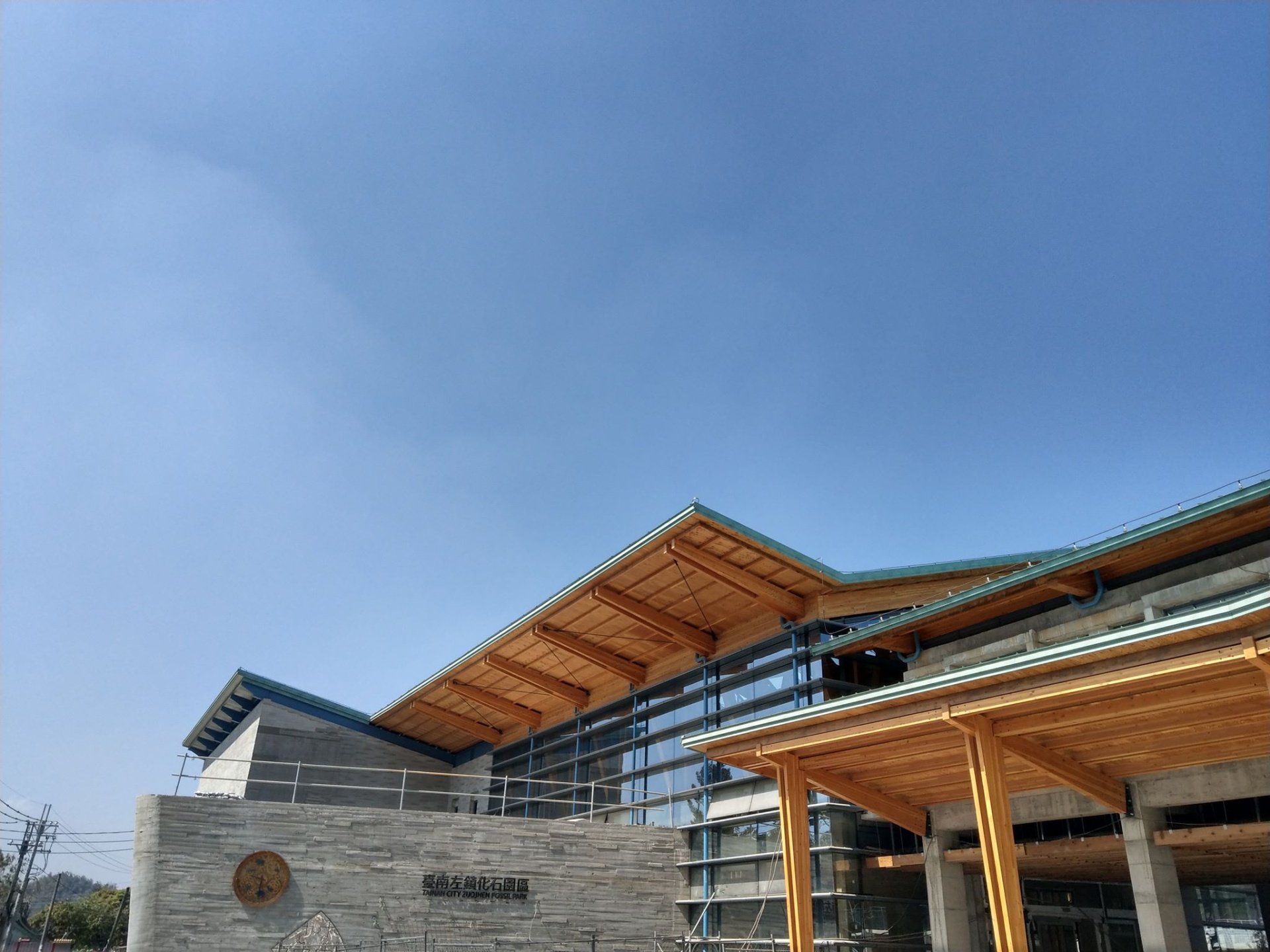
Tainan Zuojhen Fossil Museum
Site Environment
In 1969, students and teachers of Guangrong Elementary School in Zuojhen began collecting fossils at Cailiao Creek. In 1971, Taiwan's first human fossil from 100,000 years ago was discovered. In the future, the "Zuojhen Cailiao Fossil Cultural Park" will combine the fossil museum, educational hall, and Guangrong Elementary School to become a base for popularizing fossil science education and research in Taiwan. It aims to create the only off-campus fossil park in Taiwan with multiple functions, including collection, exhibition, and field collection experiences. Guangrong Elementary School students will act as young guides and interns, establishing a fossil bank for sharing archaeological resources and shaping Zuojhen as a significant archaeological town. This project originates from the discovery of a fossil group in the Cailiao Creek basin in the 20th century.The site conditions of this project are unique, belonging to a type of on-site museum. If it can match the real landscape to create a small and exquisite field museum, it will offer a unique geological and temporal experience in the exploration of paleontology.
Design Planning
The proposal "Pre-Excavation Education Center for Fossil Collection" won. The design utilizes a warm and local scattered wooden structure, combined with concrete materials resembling the strata and fossils, to create an on-site excavation experience.In the layout planning, clear zones are designated, open spaces are concentrated, existing vegetation is preserved, the museum is integrated with the school, and camping facilities are considered. It integrates field trips, stargazing, and sunrise watching into the off-campus teaching activities, following the complete process of field collection → cleaning → preparation → fossil workshop → collection → exhibition in the overall planning configuration. The massing design is integrated with the surrounding settlements, blending into the natural environment with a staggered rooftop skyline, following the terrain and contour lines to situate on the site. The wooden structure extends many semi-outdoor semi-conservatory spaces, creating a courtyard and a semi-outdoor sheltered plaza for rain and sun protection, effectively responding to the hot and rainy climate conditions of Zuojhen and becoming a green building with natural lighting and ventilation. In the future, this project will become a base for archaeological research in Taiwan, integrating local bamboo weaving craftsmanship and Plains Indigenous culture to form a complex fossil cultural park with functions in education, culture, archaeology, exhibition, and leisure.
In 1969, students and teachers of Guangrong Elementary School in Zuojhen began collecting fossils at Cailiao Creek. In 1971, Taiwan's first human fossil from 100,000 years ago was discovered. In the future, the "Zuojhen Cailiao Fossil Cultural Park" will combine the fossil museum, educational hall, and Guangrong Elementary School to become a base for popularizing fossil science education and research in Taiwan. It aims to create the only off-campus fossil park in Taiwan with multiple functions, including collection, exhibition, and field collection experiences. Guangrong Elementary School students will act as young guides and interns, establishing a fossil bank for sharing archaeological resources and shaping Zuojhen as a significant archaeological town. This project originates from the discovery of a fossil group in the Cailiao Creek basin in the 20th century.The site conditions of this project are unique, belonging to a type of on-site museum. If it can match the real landscape to create a small and exquisite field museum, it will offer a unique geological and temporal experience in the exploration of paleontology.
Design Planning
The proposal "Pre-Excavation Education Center for Fossil Collection" won. The design utilizes a warm and local scattered wooden structure, combined with concrete materials resembling the strata and fossils, to create an on-site excavation experience.In the layout planning, clear zones are designated, open spaces are concentrated, existing vegetation is preserved, the museum is integrated with the school, and camping facilities are considered. It integrates field trips, stargazing, and sunrise watching into the off-campus teaching activities, following the complete process of field collection → cleaning → preparation → fossil workshop → collection → exhibition in the overall planning configuration. The massing design is integrated with the surrounding settlements, blending into the natural environment with a staggered rooftop skyline, following the terrain and contour lines to situate on the site. The wooden structure extends many semi-outdoor semi-conservatory spaces, creating a courtyard and a semi-outdoor sheltered plaza for rain and sun protection, effectively responding to the hot and rainy climate conditions of Zuojhen and becoming a green building with natural lighting and ventilation. In the future, this project will become a base for archaeological research in Taiwan, integrating local bamboo weaving craftsmanship and Plains Indigenous culture to form a complex fossil cultural park with functions in education, culture, archaeology, exhibition, and leisure.
| Category | Public |
|---|---|
| Location | Tainan |
| Completion | 2018 |
01 / 10




